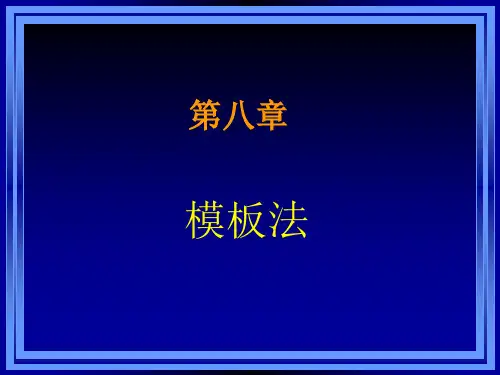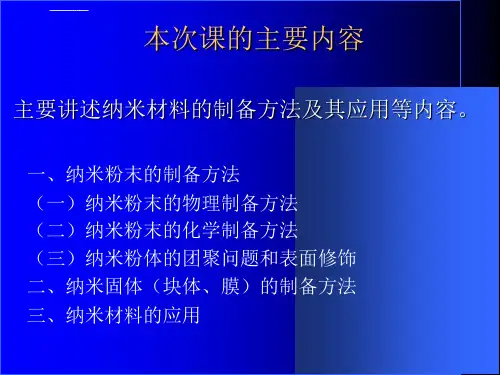第六讲 纳米材料的模板法合成 2002-10-24
- 格式:ppt
- 大小:18.24 MB
- 文档页数:60
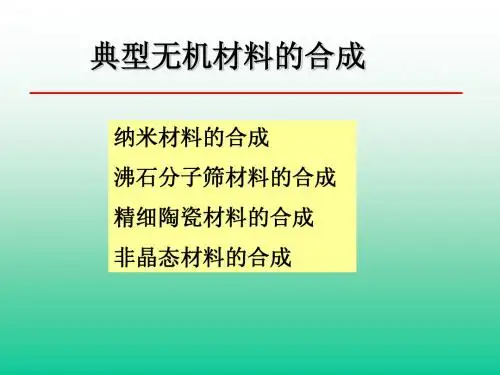
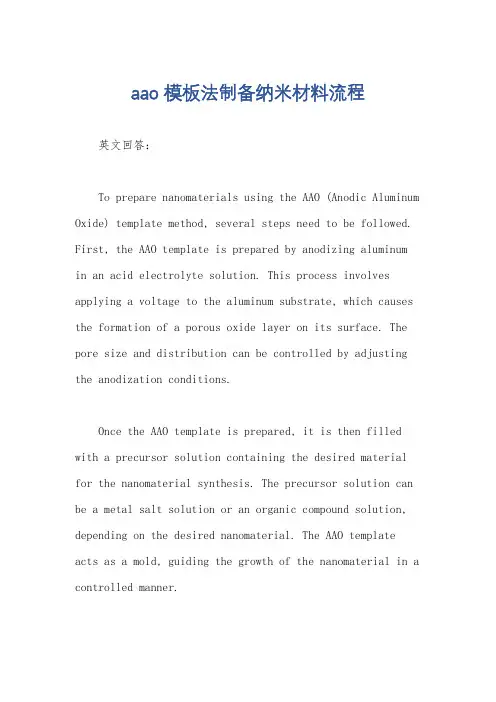
aao模板法制备纳米材料流程英文回答:To prepare nanomaterials using the AAO (Anodic Aluminum Oxide) template method, several steps need to be followed. First, the AAO template is prepared by anodizing aluminumin an acid electrolyte solution. This process involves applying a voltage to the aluminum substrate, which causes the formation of a porous oxide layer on its surface. The pore size and distribution can be controlled by adjusting the anodization conditions.Once the AAO template is prepared, it is then filled with a precursor solution containing the desired material for the nanomaterial synthesis. The precursor solution can be a metal salt solution or an organic compound solution, depending on the desired nanomaterial. The AAO template acts as a mold, guiding the growth of the nanomaterial in a controlled manner.After filling the template, it is necessary to remove the excess precursor solution and any impurities. This can be done through a rinsing process using a suitable solvent. The rinsing step ensures that only the desired material remains in the template.Next, the filled template is subjected to a thermal treatment process, such as annealing or calcination, to convert the precursor into the desired nanomaterial. The thermal treatment process involves heating the template to a specific temperature for a certain duration. This step allows for the transformation of the precursor into the desired nanomaterial, while also removing any residual organic compounds.Finally, the AAO template is removed to obtain the synthesized nanomaterial. This can be done by etching the template in a suitable etchant solution. The etching process selectively dissolves the AAO template, leaving behind the nanomaterial in its desired form.中文回答:使用AAO(阳极氧化铝)模板法制备纳米材料需要遵循几个步骤。

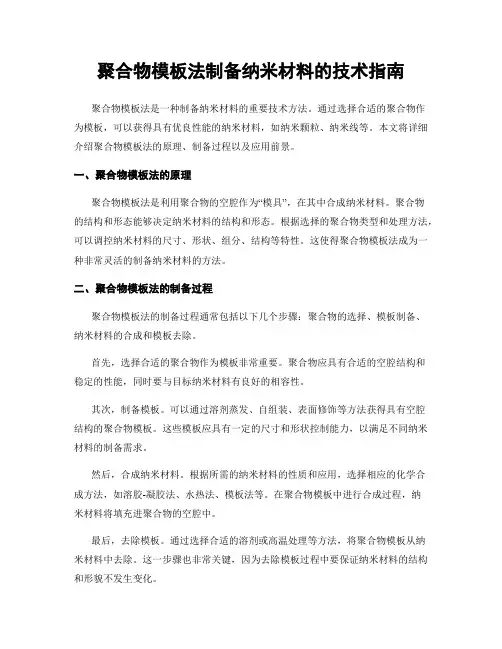
聚合物模板法制备纳米材料的技术指南聚合物模板法是一种制备纳米材料的重要技术方法。
通过选择合适的聚合物作为模板,可以获得具有优良性能的纳米材料,如纳米颗粒、纳米线等。
本文将详细介绍聚合物模板法的原理、制备过程以及应用前景。
一、聚合物模板法的原理聚合物模板法是利用聚合物的空腔作为“模具”,在其中合成纳米材料。
聚合物的结构和形态能够决定纳米材料的结构和形态。
根据选择的聚合物类型和处理方法,可以调控纳米材料的尺寸、形状、组分、结构等特性。
这使得聚合物模板法成为一种非常灵活的制备纳米材料的方法。
二、聚合物模板法的制备过程聚合物模板法的制备过程通常包括以下几个步骤:聚合物的选择、模板制备、纳米材料的合成和模板去除。
首先,选择合适的聚合物作为模板非常重要。
聚合物应具有合适的空腔结构和稳定的性能,同时要与目标纳米材料有良好的相容性。
其次,制备模板。
可以通过溶剂蒸发、自组装、表面修饰等方法获得具有空腔结构的聚合物模板。
这些模板应具有一定的尺寸和形状控制能力,以满足不同纳米材料的制备需求。
然后,合成纳米材料。
根据所需的纳米材料的性质和应用,选择相应的化学合成方法,如溶胶-凝胶法、水热法、模板法等。
在聚合物模板中进行合成过程,纳米材料将填充进聚合物的空腔中。
最后,去除模板。
通过选择合适的溶剂或高温处理等方法,将聚合物模板从纳米材料中去除。
这一步骤也非常关键,因为去除模板过程中要保证纳米材料的结构和形貌不发生变化。
三、聚合物模板法的应用前景聚合物模板法具有广泛的应用前景。
首先,在纳米材料的制备领域,聚合物模板法可以用于制备各种形态的纳米材料,如纳米颗粒、纳米线、纳米孔等。
这些纳米材料在电子学、光电子学、生物医学等领域都具有重要应用。
其次,聚合物模板法还可以用于纳米材料的功能化修饰。
通过调控合成纳米材料的组成和结构,在其表面引入各种功能基团,使其具备特殊性能,如增强光催化性能、提高电导率等。
这将为纳米材料的应用拓展提供更多可能性。
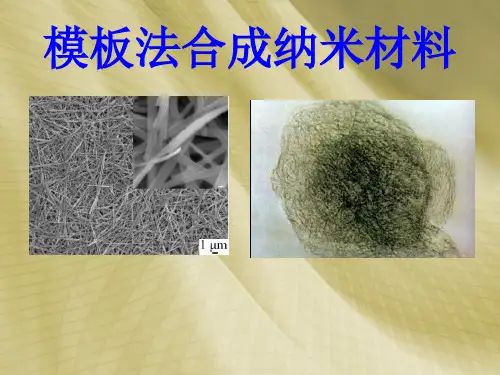
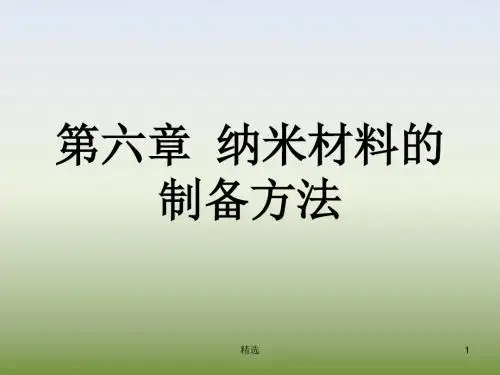
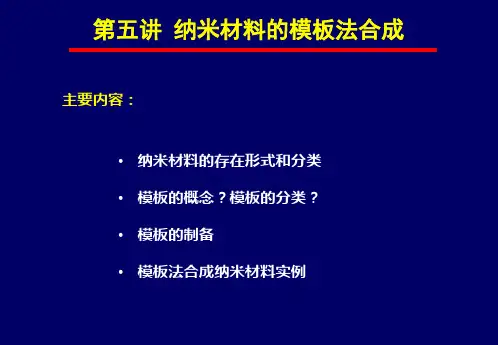
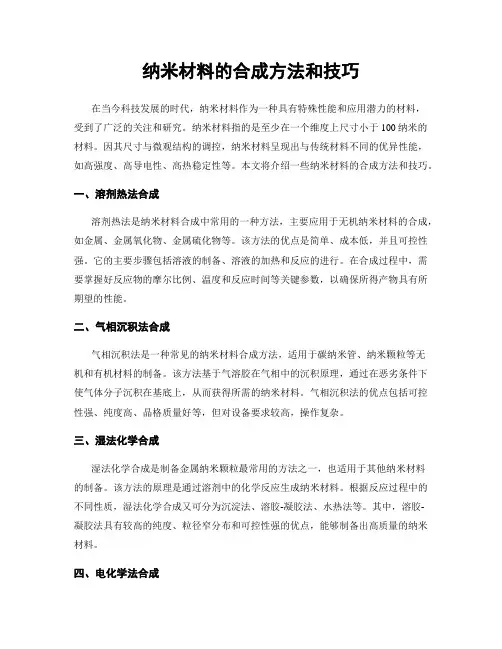
纳米材料的合成方法和技巧在当今科技发展的时代,纳米材料作为一种具有特殊性能和应用潜力的材料,受到了广泛的关注和研究。
纳米材料指的是至少在一个维度上尺寸小于100纳米的材料。
因其尺寸与微观结构的调控,纳米材料呈现出与传统材料不同的优异性能,如高强度、高导电性、高热稳定性等。
本文将介绍一些纳米材料的合成方法和技巧。
一、溶剂热法合成溶剂热法是纳米材料合成中常用的一种方法,主要应用于无机纳米材料的合成,如金属、金属氧化物、金属硫化物等。
该方法的优点是简单、成本低,并且可控性强。
它的主要步骤包括溶液的制备、溶液的加热和反应的进行。
在合成过程中,需要掌握好反应物的摩尔比例、温度和反应时间等关键参数,以确保所得产物具有所期望的性能。
二、气相沉积法合成气相沉积法是一种常见的纳米材料合成方法,适用于碳纳米管、纳米颗粒等无机和有机材料的制备。
该方法基于气溶胶在气相中的沉积原理,通过在恶劣条件下使气体分子沉积在基底上,从而获得所需的纳米材料。
气相沉积法的优点包括可控性强、纯度高、晶格质量好等,但对设备要求较高,操作复杂。
三、湿法化学合成湿法化学合成是制备金属纳米颗粒最常用的方法之一,也适用于其他纳米材料的制备。
该方法的原理是通过溶剂中的化学反应生成纳米材料。
根据反应过程中的不同性质,湿法化学合成又可分为沉淀法、溶胶-凝胶法、水热法等。
其中,溶胶-凝胶法具有较高的纯度、粒径窄分布和可控性强的优点,能够制备出高质量的纳米材料。
四、电化学法合成电化学法是一种通过电极反应产生纳米材料的方法。
通过控制电极电位或电流密度,可以在电极表面沉积纳米颗粒。
电化学法合成纳米材料的优点是操作简单、环境友好,并且可以在室温下进行。
该方法适用于金属纳米颗粒、纳米线、纳米膜等的制备,如电化学沉积铜纳米颗粒在柔性基底上的应用。
在进行纳米材料的合成过程中,还需要注意一些技巧和注意事项。
首先,必须确保实验操作环境的清洁和无尘,以防止杂质的污染。
其次,对反应条件的控制非常重要,包括温度、压力、配比等。
